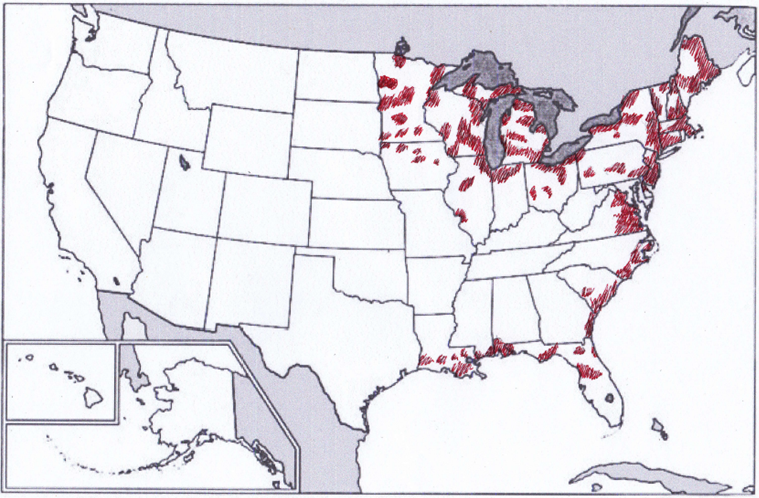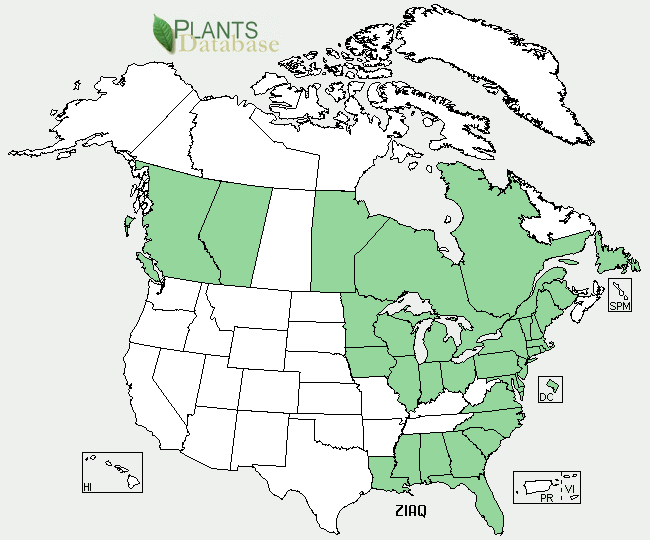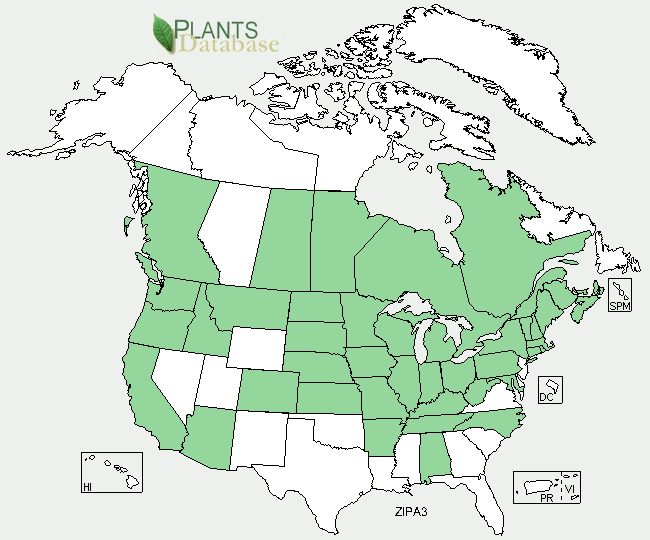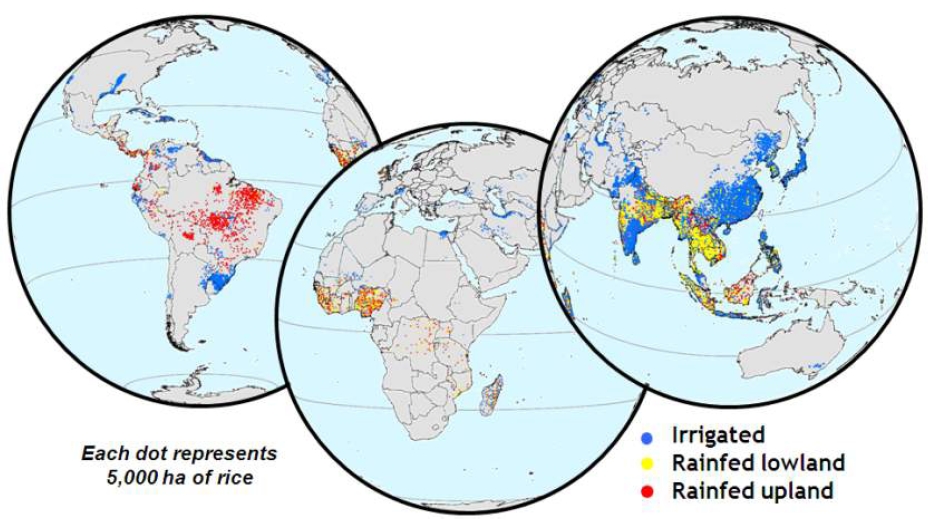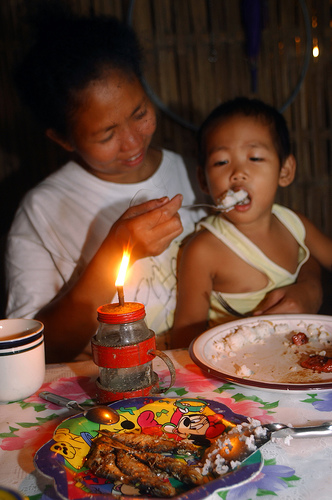Geography
|
|
| The left image displayed above shows where Zizania aquatica is found in specific areas of the United States. The image on the right shows which states and provinces in the United States and Canada contain growth of wild rice. These maps show where Zizania aquatica is located, but remember that Zizania palustris is also considered wild rice and is even more widespread than this species. As discussed on the classification page, these two varieties are very closely related and are most likely often confused for the other. |
Image is originally published by USDA. |
The image to the right shows which states and provinces contain the variety Zizania palustris. As you can see, it tends to grow better at northern latittudes. This is because because the warmer weather in the south accelerates its growth (Oelke et al 1992). |
| There are hundreds of different varieties of rice other than wild rice and rice is an extremely important agricultural product in the world. Did you know that Asia produces about 90% of the world's rice supply? In fact, in 2009 the top ten producers of rice were China, India, Indonesia, Bangladesh, Vietnam, Myanmar, Thailand, Philippines, Brazil, and Japan (IRRI, 2012). The image to the right shows areas around the world where rice is cultivated. |
Image originally appeared in IRRI.org. Some rights reserved. |
Image from IRRI Images. Some rights reserved. |
What about all types of rice consumption? Listed below are the top ten consumers of rice per capita in 2007. Each number is expressed in kilograms per person (IRRI, 2012): Brunei Darussalam: 245 Vietnam: 166 Lao People's Democratic Republic: 163 Bangladesh: 160 Myanmar: 157 Cambodia: 152 Philippines: 129 Indonesia: 125 Thailand: 103 Madagascar: 102 |
Check out wild rice's nutritional information next! How does it eat?
To go back to the home page simply click the 'home' tab at the top of this page or click here
